This article was medically reviewed by Luba Lee, FNP-BC, MS. Luba Lee, FNP-BC is a Board-Certified Family Nurse Practitioner (FNP) and educator in Tennessee with over a decade of clinical experience. Luba has certifications in Pediatric Advanced Life Support (PALS), Emergency Medicine, Advanced Cardiac Life Support (ACLS), Team Building, and Critical Care Nursing. She received her Master of Science in Nursing (MSN) from the University of Tennessee in 2006.
There are 9 references cited in this article, which can be found at the bottom of the page.
wikiHow marks an article as reader-approved once it receives enough positive feedback. In this case, 100% of readers who voted found the article helpful, earning it our reader-approved status.
This article has been viewed 177,409 times.
Experts say that for mild cases of heat rash (also known as miliaria or "prickly heat"), you may not need to do anything al all beyond trying to stay cool -- these rashes will often disappear on their own once your skin isn't overheated anymore. In more severe cases, studies do support using treatments like calamine lotion and topical steroids. Talk to your health care provider if your heat rash doesn't clear up on its own or if you're worried about your symptoms.[1]
Steps
Treating Heat Rash
-
1Know the symptoms of heat rash. Heat rash usually occurs underneath the clothes, where moisture and heat trap clothes close to the skin. It feels itchy and looks like a patch of bumps or pimples. Other symptoms include:
- Pain, swelling, or warmth of the skin.
- Red streaks.
- Pus or fluid draining from itchy areas.
- Swollen lymph nodes in the neck, armpit, or groin.
- Sudden fever (over 100.4°F or 38°C).[2]
-
2Move the affected person into a cool, shady environment. Get out of the sun and somewhere cool and dry if possible, around 70°F. If you cannot get inside then move into the shade.
- Most heat rash will go away soon after cooling off.[3]
Advertisement -
3Loosen or remove tight, damp clothing. Expose the affected area and let it air dry. Since blocked sweat glands cause most heat rash, you want the skin to be able to breath freely to prevent further blockage.
- Do not use a towel to dry your skin-- air should be fine.[4]
-
4Drink plenty of cold fluids. Heat rash is a symptom of your body overheating. Avoid hot beverages and drink plenty of cold water to lower your body temperature.
-
5Take cool showers or baths to lower your temperature quickly. The water does not need to be cold, just cool enough to be relaxing. Use a gentle cleaner or antibacterial soap to lightly clean the affected area and pat or air dry afterwards.
-
6Exfoliate your skin with baking soda to reduce inflammation. Add 1 tbsp (14 g) of baking soda to 1 cup (240 mL) of cold water. Mix until the baking soda is dissolved. Next, dip a rag into the mixture, wring it out, and drape it over your rash for 10 minutes. Then, lightly rub the rag over your rash to gently exfoliate your skin. This will open your pores, while also reducing inflammation.[5]
- Repeat this 4-5 times daily to help your rash heal.
- The baking soda may help relieve itching and irritation.
-
7Avoid popping blisters. Blisters are filled with fluid meant to heal your skin, and they can scar if popped prematurely. While some blisters will pop, try to let your skin heal naturally and avoid picking at it.[6]
-
8Use over the counter medication to ease discomfort. Treat heat rash with an application of 1% hydrocortisone cream or calamine/aloe lotion to relieve itching. For more extreme cases, antihistamines like Benadryl or Claritin can ease itching and swelling.[7]
-
9See a doctor if symptoms worsen or last longer than 2 days. While most heat rash will disappear soon after cooling off, severe heat rash can lead to infections that need treatment. Call a doctor if pain increases or spreads, if yellow or white pus begins to leak from your rash, or the rash does not disappear on its own. Immediately call emergency services if you feel:
- Nausea and Dizziness
- Headaches
- Vomiting
- Fainting[8]
Preventing Heat Rash
-
1Wear loose, breathable clothing in hot climates. You don't want your fabric to rub against your skin uncomfortably or trap sweat close to your body. Synthetic fabrics and baggy clothing work best.
-
2Avoid strenuous physical activity in hot, humid environments. Heat rash is commonly caused by exercise, when you have a higher body temperature and create lots of sweat. If you feel a rash developing, take a break and cool off.
-
3Take regular, 20 minute breaks from the heat. Cooling off, changing out of damp, sweaty clothes, or jumping into a cool pool from time to time can help your body effectively regulate temperature, preventing heat rash before it occurs.
-
4Dress infants like you would dress and adult. Most heat rashes occur in infants, when well-meaning parents over-dress their child during hot weather. Babies should wear loose, breathable clothing in the heat as well.
- Just because a baby's feet or hands feel cool to the touch does not mean they are cold.[9]
-
5Sleep in cool, well-ventilated areas. Heat rashes can appear overnight when you are trapped in damp, hot sheets for extended periods of time. Use fans, open windows, or turn on the AC if you wake up sweaty and uncomfortable.[10]
Expert Q&A
Did you know you can get expert answers for this article?
Unlock expert answers by supporting wikiHow
-
QuestionWhat do I do with a heat rash all over my back?
 Luba Lee, FNP-BC, MSLuba Lee, FNP-BC is a Board-Certified Family Nurse Practitioner (FNP) and educator in Tennessee with over a decade of clinical experience. Luba has certifications in Pediatric Advanced Life Support (PALS), Emergency Medicine, Advanced Cardiac Life Support (ACLS), Team Building, and Critical Care Nursing. She received her Master of Science in Nursing (MSN) from the University of Tennessee in 2006.
Luba Lee, FNP-BC, MSLuba Lee, FNP-BC is a Board-Certified Family Nurse Practitioner (FNP) and educator in Tennessee with over a decade of clinical experience. Luba has certifications in Pediatric Advanced Life Support (PALS), Emergency Medicine, Advanced Cardiac Life Support (ACLS), Team Building, and Critical Care Nursing. She received her Master of Science in Nursing (MSN) from the University of Tennessee in 2006.
Board-Certified Family Nurse Practitioner Start by washing your back with a mild cleanser and exfoliating with baking soda. As an alternative, soak for 20 minutes in a lukewarm bath with 1 cup (180 g) of baking soda mixed into the water. Rinse your back well with cool water, then pat it dry with a towel. Wear loose cotton clothing so that your skin stays cool and dry, and make sure your clothes are clean. Your rash will likely go away in 24 hours if you stay clean, exfoliate, and keep cool. However, see your doctor if your rash persists because they may recommend you take a mid-potency corticosteroid for 1-2 weeks.
Start by washing your back with a mild cleanser and exfoliating with baking soda. As an alternative, soak for 20 minutes in a lukewarm bath with 1 cup (180 g) of baking soda mixed into the water. Rinse your back well with cool water, then pat it dry with a towel. Wear loose cotton clothing so that your skin stays cool and dry, and make sure your clothes are clean. Your rash will likely go away in 24 hours if you stay clean, exfoliate, and keep cool. However, see your doctor if your rash persists because they may recommend you take a mid-potency corticosteroid for 1-2 weeks.
Warnings
- Don't apply oil-based antiperspirants (like deodorant), lotion, or insect repellent to affected areas because these might trap more sweat and aggravate the condition.⧼thumbs_response⧽
References
- ↑ https://www.mayoclinic.org/diseases-conditions/heat-rash/diagnosis-treatment/drc-20373282
- ↑ http://www.webmd.com/skin-problems-and-treatments/tc/heat-rash-topic-overview
- ↑ http://www.emedicinehealth.com/heat_rash/page7_em.htm#heat_rash_home_remedies
- ↑ https://www.webmd.com/skin-problems-and-treatments/tc/heat-rash-topic-overview
- ↑ https://www.medindia.net/homeremedies/prickly-heat.asp
- ↑ http://www.webmd.com/skin-problems-and-treatments/understanding-blister-treatment
- ↑ http://www.emedicinehealth.com/heat_rash/page7_em.htm
- ↑ http://www.emedicinehealth.com/heat_rash/page8_em.htm#heat_rash_when_to_seek_medical_care
- ↑ https://www.webmd.com/skin-problems-and-treatments/tc/heat-rash-topic-overview
About This Article
To treat heat rash, drink plenty of cold fluids and take a cool shower or bath to lower your body temperature. If the rash is itchy or bothersome, you can use an over the counter medication with 1% hydrocortisone cream or a calamine and aloe blend to ease any discomfort. For more extreme cases, antihistamines like Benadryl and Claritin can help ease symptoms. Despite treatment, if your symptoms worsen or linger longer than 48 hours, consult a doctor. To learn how to prevent heat rash, keep reading!
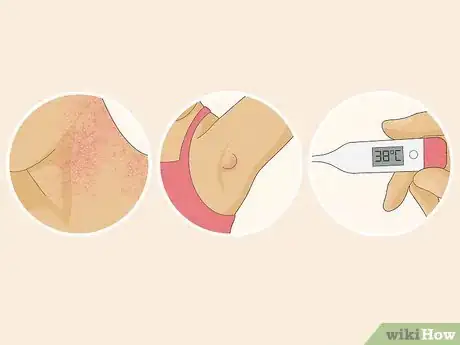


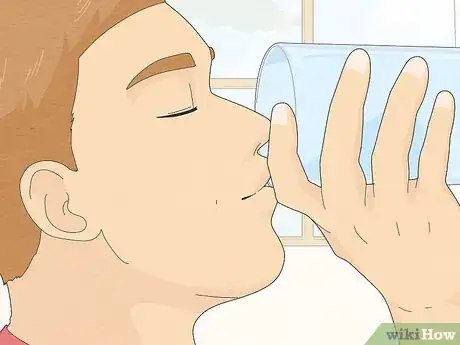
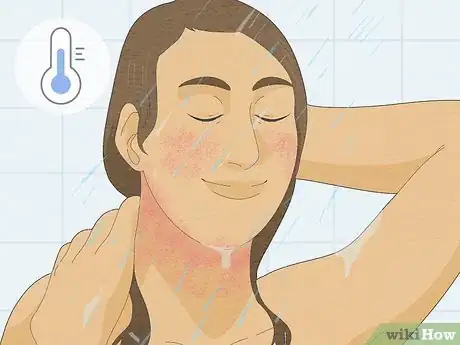

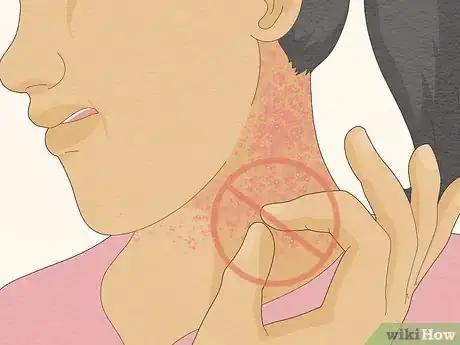
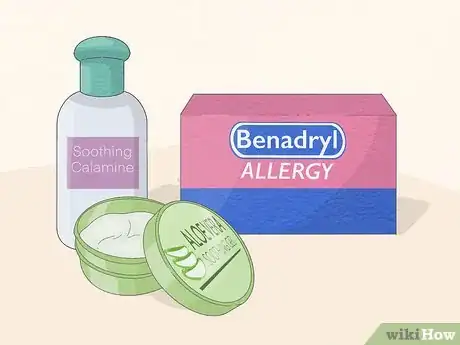

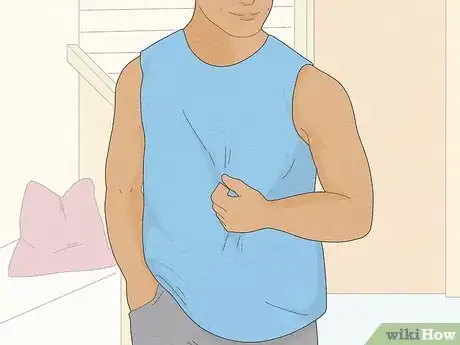
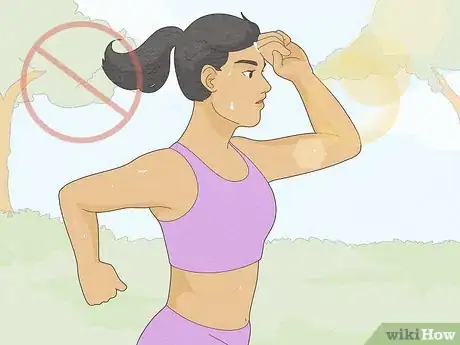

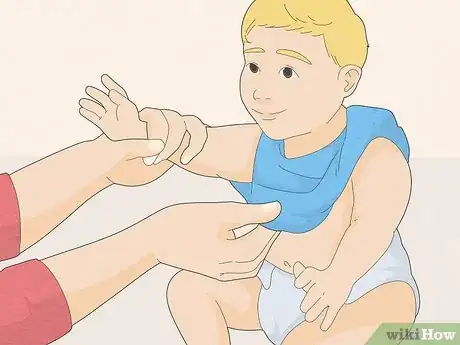
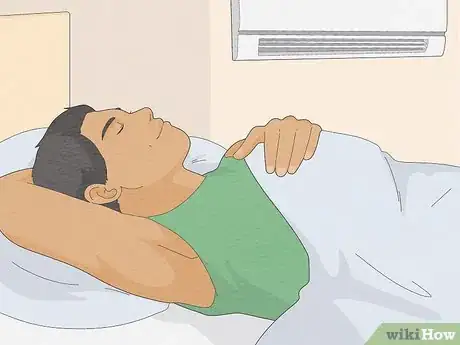




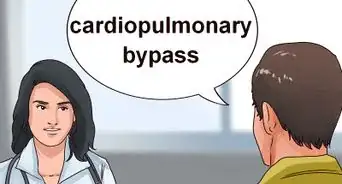
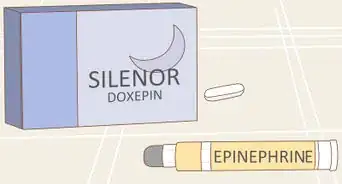

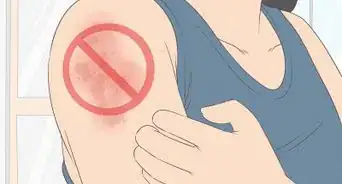



















































Medical Disclaimer
The content of this article is not intended to be a substitute for professional medical advice, examination, diagnosis, or treatment. You should always contact your doctor or other qualified healthcare professional before starting, changing, or stopping any kind of health treatment.
Read More...